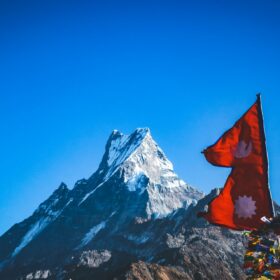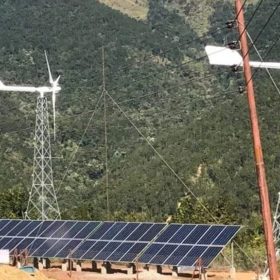Nepal allocates 960 MW in PV tender with lowest bid of $0.037/kWh
The Nepalese authorities had originally planned to allocate 800 MW of PV capacity through the procurement exercise. The 64 selected projects range in size from 5 MW to 50 MW.
Nepal’s 800 MW grid-tied solar tender oversubscribed
The Nepal Electricity Authority (NEA) has received proposals from 134 companies for a total of 3.6 GW. It says that 259 projects from 127 developers passed the technical bid evaluation and will be considered when financial proposals are opened on Oct. 22.
Nepal launches tender for grid-connected solar projects
The state-owned Nepal Electricity Authority (NEA) has launched a tender for three grid-connected solar projects with a combined capacity of at least 9.4 MW. The deadline for applications is Sept. 6.
Nepal opens tender for grid-connected solar projects
State-owned Nepal Electricity Authority is requesting proposals for the development of grid-connected solar projects across the country. The maximum total capacity available under the tender is 800 MW. The deadline to submit proposals is July 9.
Nepal seeking consultants for power system expansion, including solar
Nepal is seeking consultants to expand its power system, which includes building more than 200 kilometers of new transmission lines, upgrading existing ones, and constructing solar and solar-wind hybrid energy systems for remote areas. The deadline for expressing interest is Feb. 27, 2024.
CIGS solar cell using aluminum doped zinc oxide film achieves 9.53% efficiency
Scientists have developed a technique for producing AZO and i-ZnO/AZO bilayer structures in solar cells that greatly improves cell efficiency and durability. Using a low power deposition method that avoids raising the substrate temperature, the team achieved a power conversion efficiency of 9.53% with good transmittance.
Nepal kicks off tender for 100 MW of solar
The Nepal Electricity Authority (NEA) is seeking bids for solar projects with minimum capacities of 1 MW, for a total of 100 MW across 16 sites. Members of the country’s solar association are demanding higher power purchase agreement prices in order to participate in the tender.
Off-grid solar for Himalayan food chains
Decentralized solar devices such as PV-powered portable irrigation pumps are technically viable solutions to meet the energy needs of food value chains across the high-altitude Hindu Kush Himalaya region, according to a new report by the International Renewable Energy Agency (IRENA).
Nepal wants to support renewables up to 1 MW through viability gap funding
Nepal’s Alternative Energy Promotion Centre (AEPC) is seeking proposals for renewable energy projects not exceeding 1 MW in size.
Turning Nepal’s solar game around
Until 2016, Nepal suffered from chronic power shortages. At that time, just 65% of the country’s population had access to electricity. Assessing the situation, the International Renewable Energy Agency (IRENA) estimated that the country has the potential for 2.1 GW of installed PV capacity. Although the Nepal Electricity Authority (NEA) has officially been able to buy solar power under long-term PPAs since July 2014, the majority of projects granted these contracts have been large-scale hydropower plants. Following slow activity, plans are finally afoot, however, to boost the country’s solar footprint.









